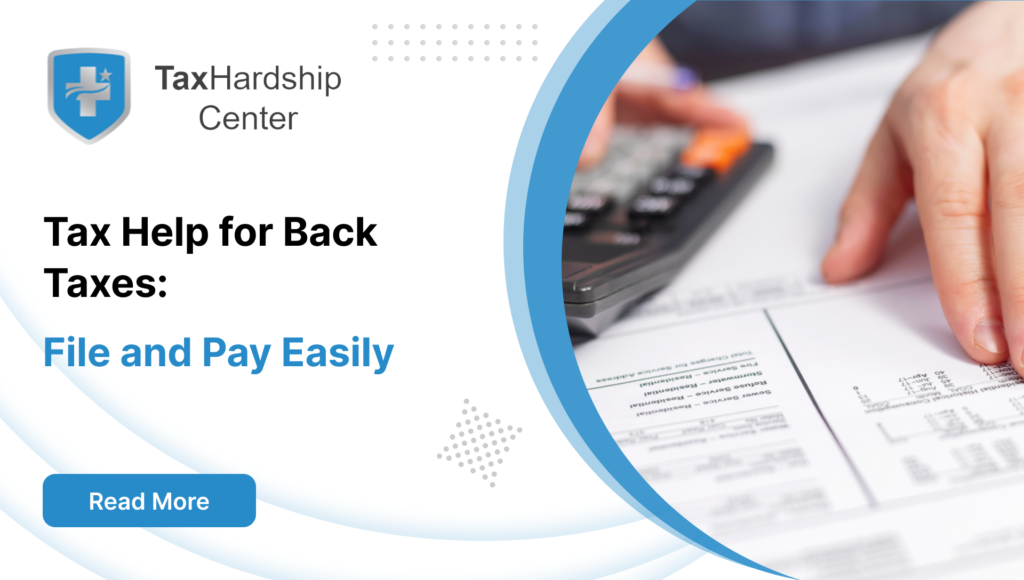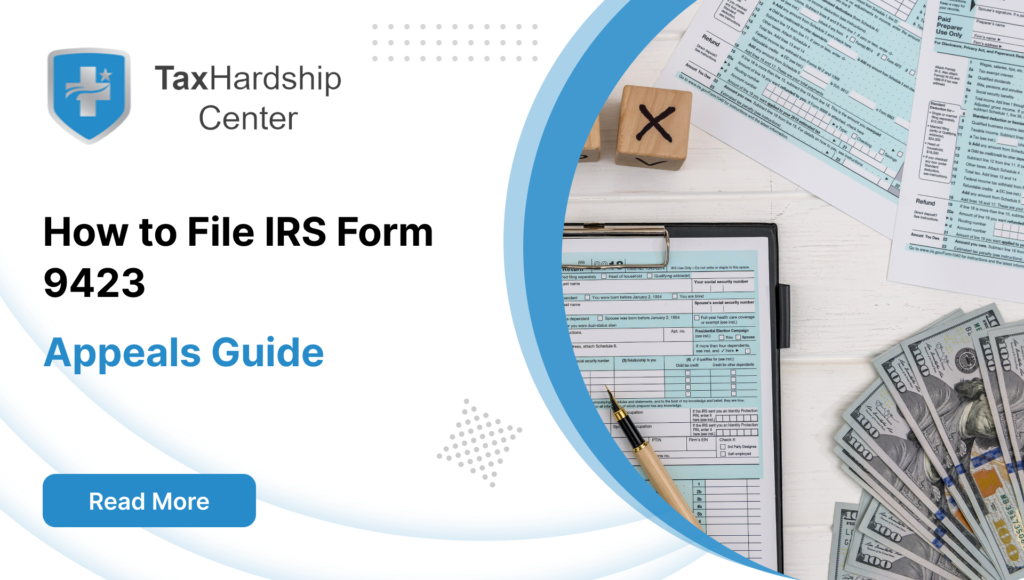Managing taxes can sometimes be complicated, particularly when encountering the Internal Revenue Service’s (IRS) Substitute for Return (SFR) process. This blog aims to demystify the SFR process, explore its intricacies, and provide guidance on addressing it effectively.
What is a Substitute for Return?
The Substitute for Return is a tax document prepared by the IRS. It comes into play when a taxpayer does not voluntarily file a required tax return. The SFR represents the IRS’s initiative to establish a tax obligation and facilitate tax collection based on the available data to the agency.
This process involves the IRS utilizing all reported income information for the taxpayer. For instance, employers must file forms such as the W-2 or the 1099 to report their employees’ and contractors’ income. Financial institutions also report dividends and interest paid to taxpayers. The IRS taps into this reservoir of information to approximate a taxpayer’s income and subsequently calculates the tax due.
Expert Assistance and Support with Tax Hardship Center
Tax hardship can be overwhelming, but you don’t have to go through it alone. Tax Hardship Center specializes in assisting individuals grappling with IRS notices, including those related to Substitute for Return (SFR) reconsideration. Our dedicated team is committed to guiding you through the process, offering personalized support tailored to your unique circumstances.
At Tax Hardship Center, we provide comprehensive assistance nationwide, serving all 50 states in the USA. With our experienced team, personalized consultations, and commitment to your peace of mind, we guarantee results with a 14-day money-back guarantee. Schedule a free 1-on-1 case consultation now, and let us guide you through the complexities of the IRS notices, including those related to Substitute for Return (SFR) reconsideration. Take control of your tax situation today and embark on the path to financial stability with Tax Hardship Center by your side.
What is the Substitute for Return Process?
The Internal Revenue Service (IRS) ensures all eligible taxpayers meet their legal obligations. Central to this endeavor is dealing with those who do not file their required tax returns for one reason or another. This is where the Substitute for Return (SFR) process comes into play—a procedure established by the IRS to address noncompliance and reconcile a taxpayer’s account by assessing the taxes they owe.
The Initiation of the SFR Process
The SFR process is not arbitrary; it is a well-defined progression that the IRS follows with specific criteria and multiple notifications to the taxpayer. It generally kicks off only after the IRS has made numerous attempts to alert taxpayers of their filing requirements. These attempts include sending notices and letters reminding the taxpayer of their delinquency and requesting that the necessary tax returns be filed.
How to Respond to a Substitute for Return (SFR):
Receiving an SFR from the IRS can be concerning, but understanding your options and taking prompt action is crucial. Here’s a detailed breakdown of how to respond:
- Step 1: Understand the SFR Notice:
- Read the notice carefully: It outlines the IRS’s assessment of your tax situation, including estimated income, potential tax liabilities, and penalties.
- Identify the type of SFR: There are two main types: CP2566 for individuals and CP2000 for businesses. Each has slightly different procedures.
- Review the proposed assessment: Consider the estimated tax owed, penalties, and interest. Note any discrepancies with your records.
- Step 2: Determine Your Response:
Option 1: Agree with the SFR (if applicable):
- If you accept the IRS’s assessment, sign and return the provided form or complete the online option (if available).
- Caution: This signifies your agreement with the proposed tax liability and penalties. Ensure you thoroughly review the details before agreeing.
Option 2: Disagree with the SFR:
- File an accurate tax return as soon as possible: This supersedes the SFR and presents your tax information.
- Gather supporting documentation: Prepare any paperwork that verifies your income, deductions, and credits. This can include W-2s, 1099s, receipts, and other relevant documents.
- Consider professional help: Consult a tax professional or advocate if the situation is complex or you require assistance navigating the process.
Additional Considerations:
- Time is of the essence: Respond within the timeframe stated in the SFR notice to avoid further complications and potential increases in penalties.
- Communication is critical: If you need more time to gather information or require clarification, contact the IRS number provided in the notice.
- Payment options: Explore available options if you owe taxes based on the SFR or your filed return. The IRS offers installment plans and other arrangements.
- Stay informed: Visit the IRS website for updated information on SFR procedures, deadlines, and resources.
Addressing Income Discrepancies During an IRS Audit: Detailed Guidance
When the IRS conducts an audit, it reviews a taxpayer’s reported income, deductions, and credits to ensure accuracy. Should this scrutiny uncover any discrepancies in the figures compared to the information reported by third parties or listed in a Substitute for Return (SFR), it can lead to a reassessment of the taxpayer’s financial obligations to the federal government.
Understanding Income Discrepancies
Income discrepancies during an audit can arise from several issues:
- Underreported Income: This occurs when the IRS detects that the taxpayer has received more income than they reported on their tax return.
- Unreported Income: If the taxpayer failed to report some sources of income, the IRS would note this as a discrepancy.
- Overstated Deductions: Claiming deductions above those incurred can also trigger an IRS alert during an audit.
- Improper Credits: Taking credits for which the taxpayer is not eligible is another potential source of discrepancies.
When an SFR comes into play, typically because the taxpayer did not file a return, the IRS uses available data to estimate income and taxes due. This often leads to a tax assessment that may not accurately capture the taxpayer’s true financial picture, as deductions and credits are not considered.
What Causes the IRS to File an SFR?
The IRS resorts to filing an SFR when a taxpayer fails to file a tax return despite having a filing requirement. The IRS uses the information it has from third-party sources to establish an estimate of the tax due.
Who Prepares IRS SFRs?
The IRS has specifically trained personnel who prepare SFRs. They utilize the information reported by employers, financial institutions, and other payers to estimate the tax due.
Unfolding the IRS Substitute for Return (SFR) Process: A Step-by-Step Analysis
The Substitute for Return (SFR) protocol administered by the IRS is a systematic procedure designed to deal with taxpayers who fail to file a tax return despite apparent income that typically requires one. The process is divided into several key stages, each with specific actions taken by the IRS, and corresponding responses are needed from the taxpayer. To grasp the full scope of this process, let’s delve into each stage with added detail.
Stage 1: Preparation of the SFR by the IRS Automated System
The IRS has established the Automated Substitute for Returns (ASFR) system, which is integral in identifying taxpayers who still need to file a return as required. The ASFR system’s algorithms analyze income data from various sources, such as employers and financial institutions, against the records of filed tax returns.
- Triggering the SFR Process: If the system detects income that would ordinarily necessitate a tax return but no such return is present on the IRS files, the ASFR mechanism initiates creating an SFR.
- What the SFR Represents: It’s essential to understand that an SFR is an IRS-generated document that estimates your tax liability based on available data. This estimate often excludes deductions, exemptions, and credits that could substantially lower your taxable income.
Stage 2: Issuance of the Initial 30-Day Letter
Upon the generation of an SFR, the IRS proceeds to inform the taxpayer of this action:
- Content of the 30-Day Letter: This letter is an initial notice informing the taxpayer of the SFR and the estimated tax liability. It is also a call to action, urging the taxpayer to address the situation.
- Taxpayer’s Options: The recipient of the 30-day letter is given several options: file the overdue return, provide additional information that might alter the assessment, or officially appeal the SFR.
- Implications of Inaction: The IRS emphasizes that failure to respond within this period can lead to more severe consequences, including a finalized tax assessment and subsequent collection actions.
Stage 3: Sending the Consequential 90-Day Letter
If the 30-day notice is not met with an appropriate response, the IRS escalates the matter:
- Purpose of the 90-Day Letter: Known formally as the Notice of Deficiency, this letter represents a critical juncture in the SFR process. It is the IRS’s final attempt to solicit a response from the taxpayer before the SFR assessment is solidified.
- Legal Significance: Receipt of the 90-day letter starts the clock on a critical deadline. Within 90 days, the taxpayer can file a petition with the Tax Court to dispute the IRS’s assessment.
- Final Opportunity for Compliance: This stage offers taxpayers their last chance to avoid potential enforcement actions by filing a proper tax return or engaging with the IRS to correct their tax records.
When the Internal Revenue Service (IRS) does not receive a taxpayer’s return by the prescribed deadline, it may take matters into its own hands. This is done through a procedure known as a Substitute for Return (SFR). While the Automated Substitute for Return (ASFR) program is designed to handle straightforward, non-filing cases, there are instances where the IRS must prepare SFRs manually outside of the ASFR framework.
This manual preparation typically occurs when dealing with intricate tax issues that the automated system cannot resolve. Complex tax scenarios could include income from multiple sources, various deductions, and international components. The IRS has the authority and discretion to issue SFRs in these complex cases to ensure tax compliance.
IRS Substitute for Returns: IRS CP-515 & CP-518 Letters
The IRS employs a series of communications to prompt taxpayers to file overdue returns, notably the CP-515 and CP-518 letters. These notices are sent as reminders and serve as preliminary warnings. The intention behind these letters is to encourage voluntary compliance. The taxpayer can file the past due return, claiming all eligible deductions and credits, ensuring the tax calculation reflects their actual tax liability.
Automated Substitute for Returns
The ASFR program is a more streamlined approach, mainly applicable when taxpayers have uncomplicated tax situations. The system can swiftly produce SFRs using information reported by employers, financial institutions, and other third parties. This method enhances efficiency and reduces the need for IRS resources if every delinquent return is processed manually. However, the ASFR’s capacity to deal with intricate tax records is limited.
Letter 2566 SC/CG
Taxpayers who have yet to submit a return may first encounter IRS Letter 2566 SC/CG. This letter is a preliminary indication that the IRS is contemplating an SFR due to the absence of a filed tax return for the year in question.
Letter 3219 SC/CG (Notice of Deficiency)
Following Letter 2566, if there is still no response from the taxpayer, the IRS will send out Letter 3219 SC/CG, also known as the Notice of Deficiency. This document signifies the culmination of the SFR process and outlines the IRS’s proposed tax assessment. Responding to this notice promptly is of utmost importance to avoid imposing the proposed tax liability by default.
Why You Should File a Tax Return If You Receive an SFR
There are compelling reasons to file your tax return after receiving an SFR. Notably, the IRS-prepared return will not consider any deductions or credits you may be entitled to, potentially leading to a higher tax assessment than necessary. By filing a proper tax return, you can ensure that your tax obligations accurately reflect your financial circumstances, resulting in a lower tax bill.
What if You Receive an SFR and Need a Filing Requirement?
Even if you believe you are not required to file a return, you must address any SFR issued in your name. Communicate with the IRS to clarify your tax filing obligations. Failure to respond to an SFR can lead to unnecessary complications, including enforced collection actions.
How to Dispute Tax Assessed From an SFR
If you receive an SFR and disagree with the assessment, filing a correct tax return is appropriate. Include all the necessary information and documentation that supports your tax position. Should you discover that the IRS has already assessed tax based on an SFR, you may need to file an amended return or formally challenge the assessment through the IRS appeals process. Taking swift action to correct any misunderstandings and settle your tax liabilities appropriately is crucial.
By understanding the SFR process and how to respond appropriately, taxpayers can take control of their tax situations and ensure they are paying only what is necessary. Remember that seeking professional tax advice is often beneficial when dealing with complex tax matters or disputes with the IRS.
Conclusion: Taking Charge of Your Tax Affairs
Navigating the complexities of the Substitute for Return (SFR) process can be daunting, but armed with knowledge and proactive steps, taxpayers can effectively address this challenge. Understanding the SFR process, from its initiation to potential disputes, empowers individuals to take control of their tax affairs and ensure compliance with IRS requirements.
By promptly responding to SFR notices, individuals can avoid unnecessary complications and potential enforcement actions. Whether agreeing with or disputing the assessment, timely action is critical to resolving SFR issues and preventing further penalties.
Why Tax Hardship Center?
- Hassle-Free Assistance:
Say goodbye to sleepless nights and endless tax-related stress. At the Tax Hardship Center, we believe in simplifying the complex. Our team of experts is dedicated to guiding you through every step of the process, ensuring that your tax concerns are met with precision and care.
- 14-Day Money Back Guarantee:
We’re so confident in our ability to ease your tax worries that we offer a 14-day money-back guarantee. If, for any reason, you’re not satisfied with our service, we’ll gladly refund your investment. Your peace of mind is our top priority!
- Free Consultation:
Are you curious about how we can transform your tax experience? Book a free consultation now! Our team will assess your situation, answer your questions, and provide free insights tailored to your needs.
- Nationwide Coverage:
No matter which corner of the United States you call home, the Tax Hardship Center covers you. We proudly serve all 50 states, bringing our expertise to your doorstep. Wherever you are, our commitment to excellence follows.
FAQs
1: What is a Substitute for Return (SFR)?
The Substitute for Return (SFR) is a tax document the IRS prepares when a taxpayer fails to file a required tax return voluntarily. It represents the IRS’s estimation of a taxpayer’s income and tax liability based on available data.
2: How should I respond to an SFR notice from the IRS?
Upon receiving an SFR notice, carefully review the details outlined, including the proposed tax assessment and any penalties. Determine whether you agree with the assessment or wish to dispute it. If disputing, file an accurate tax return with supporting documentation as soon as possible.
3: What are the consequences of not responding to an SFR notice?
Failure to respond to an SFR notice can lead to further complications, including enforced collection actions by the IRS. Addressing SFR issues promptly is crucial to avoid additional penalties and legal consequences.
4: Why should I file a tax return if I receive an SFR?
Filing a tax return after receiving an SFR allows you to ensure that your tax obligations accurately reflect your financial circumstances. The IRS-prepared return may only consider some eligible deductions and credits, potentially resulting in a higher tax assessment than necessary.
5: Can I dispute tax assessed from an SFR?
Yes, if you disagree with the assessment based on an SFR, you can file a correct tax return with supporting documentation. Additionally, you may need to file an amended return or formally challenge the assessment through the IRS appeals process to address misunderstandings and appropriately settle your tax liabilities








